-
Posts
1,575 -
Joined
-
Last visited
Content Type
Profiles
Forums
Blogs
Gallery
Events
Store
Posts posted by Chuck In Oregon
-
-
And how do we know that these are really his awards?
This last document is the 1951 receipt from the Georgian MGB for the medals and side-arms of Col. Dundua, turned in upon his death. It is signed both by A. K. Gukasov for the MGB and by E. P. Dundua, the colonel?s widow, who also signed that she received a copy.
The sidearms are identified as ?Nagan? revolver s/n VP 2476 and Parabellum pistol s/n 6532.
The awards are described as Red Star No. 721391, Badge of Honor No. 88532, Military Service No. 590039 and un-numbered medals for the Defense of the Caucasus and for Victory over Germany. These are the awards in the first picture.
So, why does this receipt exist? Why didn?t his family get to keep his modest group of awards? Again according to my friend in Georgia, it was because this existence of this department, as well as the name of its chief, was a state secret and no record of him was to be made available after his death.
I do not know the details of his early (age 46) death. It is not quite concurrent with Beria?s bigger purges, but Dundua was likely to have at least been known by Beria. This must have been both a physically and politically hazardous job that didn?t lend itself to a normal retirement.
This group languished in MGB/KGB files in Georgia until after independence when they became available by some means. Whether they were given back to the family or stolen when the KGB archives were ransacked or simply lifted by an unpaid employee somewhere along the line, I can?t say.
I hope you enjoy this interesting little group. As always, I welcome better translations and interpretations than my own. There you go, Rick.

 0
0 -
Here is militia officer Dundua?s 1948 attestation of promotion to Polkovnik, or U.S. full colonel equivalent. Note that they were still thriftily using the old NKGB form!
This top secret attestation was issued under the authority of the Okhrana MGB Administration of the Ordjonikidze Railway, by the Deputy Director of the Department of Crime Prevention.
It tells us that David Semenovich Dundua was a Georgian born in 1905, he served in the RKKA from 1927-1929 and entered the Cheka in 1930. It goes on to say that he was awarded a Red Star, a Badge of Honor, a Medal for Military Service (aka Combat Service), a Medal for the Defense of the Caucasus and a Medal for Victory over Germany. Those are the ones you see in the first picture.
The first endorsement, by Transport General-Major Samigin, states:
?Comrade Dundua D. C. is an old chekist of the transport organ of the NKVD/MGB. In his time working in that organ he gained significant experience as a secret agent and military investigator.
In the period of the Great Patriotic War he consistently advanced as an official. Politically mature. Morally stable.?
The next endorsement, by Transport General-Lieutenant Vadis, simply agrees to the promotion. Lukewarm, but likely simply a formality.
It is in the last paragraph on the back where things get more interesting. It is the actual awarding of the rank and assignment, done by Senior Inspector of the 5th Department UK MGB SSSR, Lt. Col. Maremyanov. He writes:
?Awarded the military rank of Colonel, appointed to the post of chief executive of the special department under the administrative command of the MGB GSSR (Georgian SSR).?
So, what was the special department? According to my friends in Georgia, it was the MGB department charged with rounding up and executing political and other criminals.

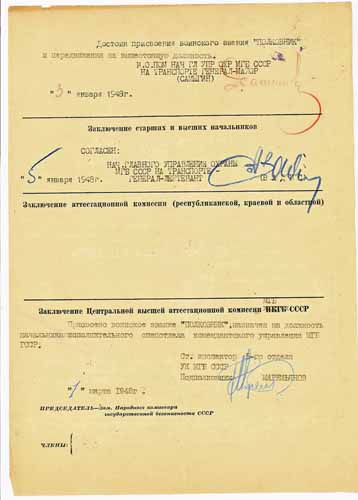

 0
0 -
This seems a modest enough group by any standards. Only when its documents tell us the story does this group become interesting. Fascinating, even.
[attachmentid=25260]
[attachmentid=25261]
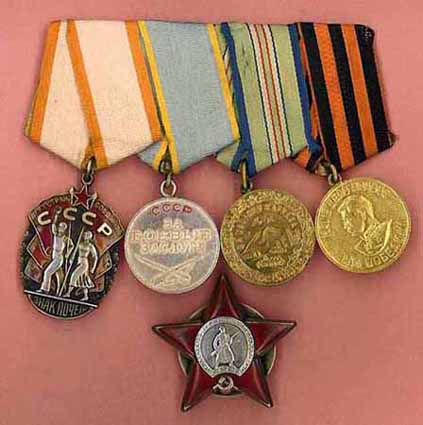


 0
0 -
Hello O/V
Welcome to the forum. You have sure made an impressive start.
That is an incredible order. I am not qualified to debate its bona fides. I can only say that it would be the highlight of most advanced collections.
Is there a story behind how you found it?
I hope that you will keep on sharing with us.
Chuck
0 -
I think that this was a nurse's society, one dedicated to caring for wounded veterans. Does anyone know for sure?
These simple jetons are dated 1901 and 1907 with their owner's names, A. G. Verkhovodov and B. S. Esadze, respectively, engraved on the backs. As an aside, names ending with -adze, -idze, -shvili and -shvali are very common in Georgia. All mean "child of". Yes, child and not son or daughter. There are no such distinctions in Georgian. Really.
Both jetons are silver with an intricate and distinctive pattern beneath high quality, transparent red enamel.
The imperial crowns seem quite different. Does anyone know why?
I don't really collect Imperial medical awards and jetons but I have accumulated a number of nice ones. It is an interesting field. When I find the time I'll post an engraved wedding platter from a 1914 military hospital wedding, plus a couple of the newlyweds' badges.
Feeling any better now, Rick?
Chuck
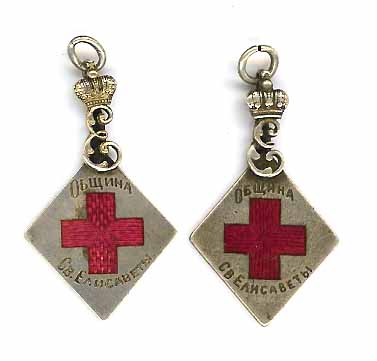
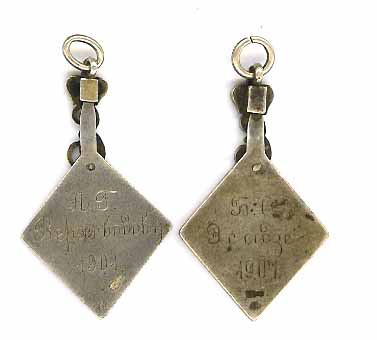

 0
0 -
OK, where's the new goodies? More, more, more please! ;>)
* * * * *
OK, stop panting. I've got more to share but I have been way busy lately. The first group I'm going to share will be Soviet, but you'll like it anyway. Maybe on Saturday, if I can clear the time.
BTW, my buddy is still negotiating on the attributed gold badge of the first commander of the Caucasus Air Fleet. I plan to go over in the spring and I hope to bring it home with me. With gold at over $560, prices are really getting ridiculous.
Chuck
0 -
Weren't the roundels on WWI Period Russian planes white/red/blue. Are these just Tsarist colours?
Regards,
Pete
* * * * *
Yes, I think a white circle inside a blue ring inside a red ring. The same as today, I believe.
Chuck
0 -
That's a knock-out jeton, Pete. Even the box is a great collectible.
The color in my badge is a pretty true orange rather than a red. However, I have to allow that the MF might be Maria Feodorovna. (Manny Fernandez? Nah, probably not.) With its gold and silver but lacking proof or maker marks, I have to wonder whether any regimental badges were so unsigned.
This is starting to get a lot more interesting than I thought it was!
Chuck
0 -
Hi Rick
Thanks, I like the piece too. However, in describing it I would be remiss not to comment on the wavy enamel. I wonder why the original purchaser didn't specify better enamel, as long as he was ordering silver and gold anyway.
Chuck
0 -
Here's my Cheka 15-Year Jubilee Badge. It is quite a bit different from Rusty's. Four rivets, no number, no proof or maker marks and so forth.
I keep thinking that I used to have another Honored NKVD badge than the one you have already seen, but I may have sold it. At the very least, I can't seem to find it at the moment.
Chuck

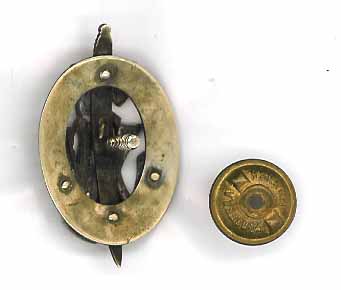

 0
0 -
Would it have to symbolise a target? it seems similar to the cockade system used by the Germans. And tell a british pilot that the RAF roundels are targets ;-))
Maybe something other than shooting?
* * * * *
Yes, it is possible that it is something other than a locally commissioned shooting award. However, that is what I believe it to be.
As far as the RAF roundels, good point. But what Luftwaffe pilot would think that they weren't?
Chuck
0 -
WOW! What an outstanding photo. At first I didn't even recognize it as a shooting award because it's so darn big. When I saw the zoom image I couldn't believe it. I haven't seen anything like that before. His tunic has more awards than my whole collection. I hesitate to ask if you would sell it for fear of offending you, but if you would ever consider trading (or selling) that photo I would sure be interested. Can you identify all the other hardware? I am especially curious about that award around his neck.
Thanks for sharing that photo. It is a treat to look at it. Would you mind if I saved a copy for myself?
Chuck
0 -
I've been away from the forum for a bit. Now I can resume the things that I enjoy here. I'll start by sharing this custom (I hesitate to say one-off, who knows?) shooting badge that I received last month. It has no known provenance, unfortunately, other than that it came from the family in Tbilisi. I can't even make out the stylized initials on the reverse. My guess is ФМ or МФ (FM or MF) but I'm not sure.
The shape of the badge is a target with a black bull's-eye and colored outer rings. There are no proof or maker's marks, typical of small Tbilisi shops I think. The crown over N II appears to be solid gold and the and the rest of the metal seems to be silver except for the link. The enamel, in three colors, is of fair-to-poor quality with an uneven surface overall that takes away from the overall appearance of the badge.
Still, I like the old shooting badges and this one is likely to stay in my collection.
Chuck

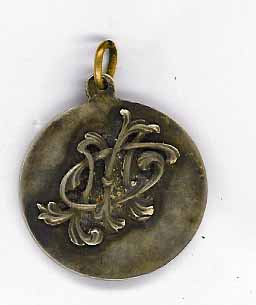

 0
0 -
My book shows it as The Badge of the Life Guards Kexholmsky Regiment, or the Kexholm Regiment
Not an easy one to find..

George
* * * * *
Your book is consistent with what my Georgian friend told me. He is an historian and quite reliable.
Are you referring to the same book you told me about before? I've got to get some more reference books.
Thanks, George.
Chuck
0 -
What exactly did this membership do? Propaganda?
* * * * *
Danny -- I think that Dima has given us a superb answer. First and foremost, I believe that MOPR was a cash cow designed to bring money into the party coffers. As best I can recall, on the surface MOPR was supposed to be supporting jailed revolutionaries abroad, particularly in Africa. My guess is that not much of the revenue actually went to that end.
Dima -- In case I didn't say so before, welcome to the group. With your experience you are going to be a very valuable resource for us. Thank you for your insight.
Chuck
0 -
This is everything that I have from this gentleman. This group did not come from his family. It has an interesting provenance, though.
Yes, that looks like an early GTO badge, and one of the better ones at that. I have a silver example of that variant, the only one I have ever come across.
Chuck
0 -
Rick
Thanks for the translation. I had some of the words but I couldn't put them together to mean anything.
Chuck
0 -
... And here's the interior of the book. All of 1919 and 1920 are x'ed out and his dues start in May, 1921. They end there, too. No subsequent payments.
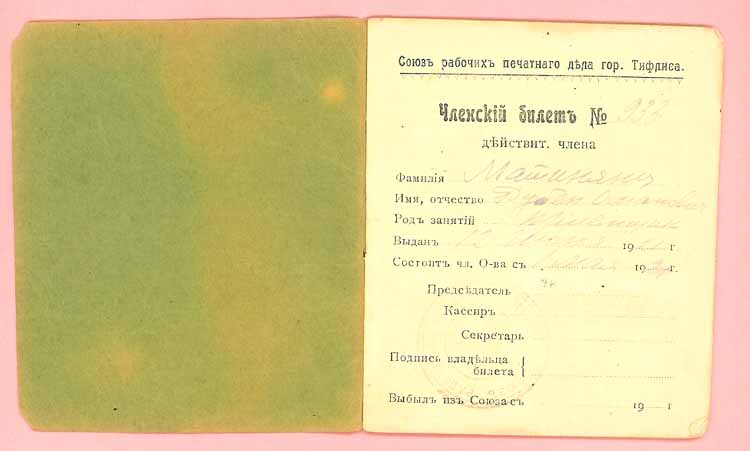
 0
0 -
And here's the front of the membership booklet that goes with the badge. For publishing house workers, they didn't exactly get fancy when they decided on their book. I thought that maybe all the writing had simply faded away. No, there wasn't any to begin with except for what they wrote on the cover with a pen. Comrade Matikiants seems to have been member #933.

 0
0 -
This is a very early Soviet trade union badge. It is heavy -- 12.52 grams without the screwplate -- and appears to be solid silver. However, it is neither proofed nor maker marked except for that unusual mark under the green enamel on the lower right side. I can't tell what that is.
The odd-shaped hammer and sickle (no, it does not appear to be broken) is a thin layer of gold laid over another metal, perhaps silver, but it is not plate.
Chuck

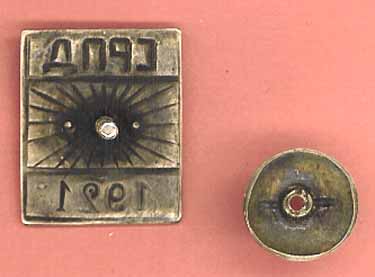

 0
0 -
I am really surprised on how much Imperial silver and gold awards survived, In the EAST.
My understanding was most all item that were worth CASH would have been sold as scrap long ago.

Well I guess that great for us collectors.

Keep them coming Chuck.
George
* * * * *
I have been offered, on a couple of occasions, the left-overs after an Order of Lenin had been dismembered. On both occasions the explanation was the same ... they went into gold teeth. One of the occasions involved TWO Lenins to the same person. Sigh.
There is still a lot left to collect if you look hard. My friends still find some incredible things for me. It's their hard work that keeps me in new collectibles.
I had a very large bag of silver items a couple of years ago, maybe 25 sizable items, that I eventually was prohibited from taking home with me. No particular reason, except that everyone wanted a bribe. I eventually re-sold them to some Georgians. Oh well.
Chuck
0 -
Hi George
I should remember to include the size of things like this.
This one is 4-1/8" x 1-7/8" (10.5cm x 4.7cm) and it weighs 62.57 grams. A sizable piece of silver and gold.
I enjoy presentation pieces. I have 2-3 more, a couple of silver vodka cups and a silver plaque that was removed from a desk set. They remind me of the people behind the awards.
Were you thinking of the small sweetheart jetons? They are about an inch or so long. I have 7-8 of those that I have thought about showing here. I even have 1-2 from general officers.
Chuck
0 -
This is a presentation piece upon, as I recall, the departure of Gen.-Maj. G. P. Ardjavanidze to assume a higher command. As I translate this -- and I am not positive of the middle initial -- the reverse reads:
"General-Major G. P. Ardjavanidze, from the officers of the 16th Grenadier Regiment - Tiflis - 1916"
The 16th was Tiflis' (Tbilisi's) own. They were numbered, rather than previously named, after the 1915 death of their named patron who was, if I recall correctly, one Duke Mikhail. I just may have that name confused with another, but not the numbering part.
Solid silver with gold stars and trim.
Chuck



 0
0 -
Here are two more frachniks I just received. They are miniatures of the first class orders of St. Anna and St. Vladimir, left and right respectively. Each is 84 proofed and maker marked.
Chuck

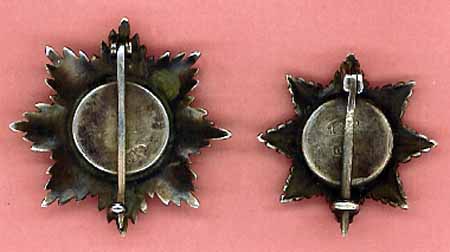

 0
0




Comrade Chief Executioner
in Russia: Soviet Orders, Medals & Decorations
Posted
* * * * *
I can certainly buy into that likelihood. I doubt we'll ever know, but it's more probable than, say, a traffic accident. I don't think that most of those guys' families got receipts for their personal effects, but to give one in this case might also intentionally further cloud the record. They were devious and deadly rascals.